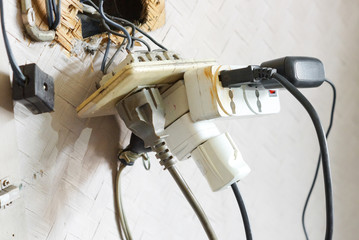Wildfires can be an inevitable reality of nature, but making sure your home is protected from them does not need to be a difficult task. If you have a property with a fireplace or wood-burning stove, you should install a fire protection system as soon as possible. Even if you live in a rural area that does not experience frequent fires, you never know when one might start. Installing a fire sprinkler system in the home is an effective way to reduce the risk of a disastrous inferno.
The most common reason people are forced to leave their homes during a wildfire is smoke and debris. Smoke from a fire can fill rooms, making it difficult to breathe for long periods of time. Drying out carpets and fabrics can also make it hard to fight fires that break out because the materials will absorb the moisture, leaving rooms in a dank, smoky state. By making sure your chimney is equipped with a fire extinguisher and smoke detector, you can stay safe and prevent catastrophe.

Trees and bushes around your home provide good living spaces for birds and other wildlife and provide and provide heat and other benefits to your yard. However, they can also serve as the perfect hunting spots for animals and humans, providing shelter and cover for flames. Fires can start from anything, from trees falling and crushing houses to birds munching on twigs and leaves. Wildfire prevention is best done as early as possible to prevent buildings and lawns from being destroyed by thick black smoke.
To stop a wildfire from burning so dramatically, you must contain the fire to a more manageable level. This can be accomplished in several ways, including creating a solid, dry, and defensible space. First, make sure there is no debris or flammable material anywhere near the fire. Keep everything contained and sealed off. Ensure no flammables are stored near the fire, such as cigarettes, lighters, matches, or other items that can start a fire easily.
It would help if you also took special care to ventilate any areas where you might have one of these fires. This can be done in several ways, such as using fans, opening windows, or opening doors to allow fresh air into the area. It can also be done by cutting down any overgrown vegetation or clearing away dead branches or trees in your yard. This should be done before the vegetation grows thicker due to insects that naturally feed off leaves and wood.
There are many types of fires that can happen throughout the country and in your own backyard, which is why it’s important to know what to do in case you encounter a wildfire. It would help if you tried to contain the fire to its primary source and then create a secondary backup plan if the source isn’t completely done away with. This will help ensure that all vegetation and resources vegetation and resources used in creating the wildfire are not lost. You should also make sure that you never plant or place any of your trees or plants directly around the fireplace. This is because they can easily catch on fire and cause more harm than good.
The roof of a house is typically the most visible part of the structure of a building, so you must protect it. There are a few different ways to protect your roof from wildfire. For smaller fires, you may consider using metal sheets tied to wires to contain them. It would be best if you considered using heavy-duty fireproofing materials like tarps or sheets to seal up the roof for larger fires. If you live in an area with a high number of fires, it’s a good idea to install smoke detector alarms in your house as well, which can alert you and the proper authorities if a wildfire should begin.
Prevention is the best way to deal with fires and to learn more visit. Don’t think that you can’t do anything to stop them. While it’s impossible to prevent every wildfire from happening, you can take precautions to stop certain kinds from happening. It’s also important to remember that no kind of vegetation can actually stop a wildfire from burning. But by making sure that you have good protective structures in place and avoiding placing things directly around the fireplace, you’ll be better off than doing nothing at all.

